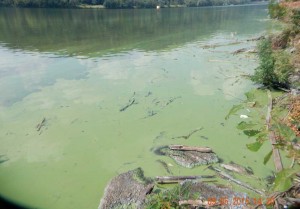- Like
- Digg
- Del
- Tumblr
- VKontakte
- Buffer
- Love This
- Odnoklassniki
- Meneame
- Blogger
- Amazon
- Yahoo Mail
- Gmail
- AOL
- Newsvine
- HackerNews
- Evernote
- MySpace
- Mail.ru
- Viadeo
- Line
- Comments
- Yummly
- SMS
- Viber
- Telegram
- Subscribe
- Skype
- Facebook Messenger
- Kakao
- LiveJournal
- Yammer
- Edgar
- Fintel
- Mix
- Instapaper
- Copy Link
 Shortly after our son graduated from high school in 1995, our family moved from the Ohio River Valley to Iowa. One of the most noticeable differences between SE Ohio and Iowa was the landscape. Iowa’s was basically a flat terrain dominated with corn and soybean crops. With the exception of river banks, very few forested areas were present in the Quad Cities where we lived.
Shortly after our son graduated from high school in 1995, our family moved from the Ohio River Valley to Iowa. One of the most noticeable differences between SE Ohio and Iowa was the landscape. Iowa’s was basically a flat terrain dominated with corn and soybean crops. With the exception of river banks, very few forested areas were present in the Quad Cities where we lived.
Big agriculture is a major player in Iowa’s economy. It seemed like every commercial on TV was one for a pesticide, an herbicide, or man-made fertilizer. Corn requires lots of nitrogen and most large-scale farming operations use ammonium nitrate. While we were in Iowa there were several water alerts warning citizens of the presence of excessive amounts of nitrate compounds in drinking water. The compound is very water soluble making it difficult for drinking waters suppliers to remove it from drinking water. It can be removed on a small-scale basis by using residential reverse osmosis systems.
Because nitrate is toxic, Iowa’s citizens were advised to use bottled water rather than tap water to make baby formula. When exposed to nitrate-contaminated water, the baby’s body converts the nitrate to nitrites which combine with hemoglobin to form methemoglobin. This will not carry oxygen to cells and thus the body takes on a bluish, oxygen deprived hue. The baby becomes cyanotic.
Since much of the Ohio River watershed is in the middle of an agricultural area, it too has nitrates as a contaminant. The heavy nitrate run-off from farming has necessitated the monitoring of the Ohio River for nitrates by the Ohio River Valley Water Sanitation Commission (ORSANCO) on a bi-monthly basis. Nitrates are one of the excess nutrients causing the now notorious algal blooms on Lake Erie and the Ohio River. Lake Erie’s blooms affect Toledo’s drinking water and these blooms seem to be getting worse due to climate change.
Atrazine is another compound of concern in the Ohio Valley region. Atrazine is the number one herbicide used to kill weeds in cornfields. The amounts used in the USA are a staggering 76 million pounds each year. Because atrazine can also be absorbed dermally, washing or taking a shower in atrazine contaminated water can cause the toxin to be absorbed.
Ohio corn famers use the herbicide atrazine. It has been banned in Europe since the 1980s, but is used on 75% of all corn acreage in Ohio. It is linked to prostate cancer, heart problems, hormonal problems, and kidney and lung problems. The Environmental Working Group found atrazine in the watersheds of Deer Creek, Mad River, North Fork Licking, and Kokosing, in concentrations above the EPA 3.0 parts per billion drinking water standards. They also found that is 2017 “utilities in Illinois, Kansas, Kentucky and Ohio had atrazine spikes much higher than the federal legal limit of three parts per billion, or ppb. The two highest spikes were reported in Evansville, Ill., at 22 ppb, and Piqua, Ohio, at 16 ppb.”
Mercury, a heavy metal, can cause brain damage and is a neurotoxin. Ohio’s drinking water supplies have a history of being contaminated with mercury. The Ohio River, the most polluted river in the USA, has had an ongoing issue with mercury contamination. The mercury is often directly discharged into the river from industry. Since mercury can accumulate in the food chain, fish advisories are often listed for fish found in surface waters in Ohio. There is a 135-mile stretch of the Ohio River where mercury levels are so high, anglers are warned to only eat fish caught in this stretch of river once a month.
Mercury can also enter surface waters from the atmosphere. When mercury-containing materials such as mercury-containing paints are burned in incinerators, or when coal is burned in power plants, the elemental mercury in the compounds is not destroyed. It becomes volatilized and is emitted from the smokestacks. The mercury then settles on the landscape and is carried into surface water during rain run-off.
Data from the Environmental Integrity Project found “unsafe levels of pollutants including lead, arsenic and mercury are leaking into nearby groundwater from coal ash sites at 14 coal-fired power plants in Kentucky, 10 in Ohio, and 7 in West Virginia. The largest coal-ash waste site in the USA lies on the border of Ohio and West Virginia in the town of Chester, WV. The 960-acre site, known as Little Blue Run, is owned by FirstEnergy. It closed in 2016. The site is so large it can be seen from space. In an attempt to bolster the coal industry, the Trump EPA proposed weakening the standards for coal-ash impoundments in 2019.
If you are on a city drinking water system, you are supposed to receive an annual notification about your water quality. The notification, which is issued by the EPA, is the “Public Water System Consumer Confidence Report.” We got a report when we lived in Cambridge, Ohio. Trihalomethane is a group of organic compounds that is often listed on these reports for exceeding the Safe Drinking Water standards. Oddly, these compounds are created as a result of water chlorination. The naturally occurring organic matter in water (soil, leaves) reacts with the chlorine added during the disinfection stage and creates trihalomethanes.
This group of compounds have chlorine atoms attached to a single carbon atom. To give you an idea of the toxicity of these compounds, four chlorine atoms attached to a single carbon atom is carbon tetrachloride; drying cleaning fluid. Three chlorine atoms attached is chloroform.
The National Institute of Environmental Health Science did a study showing residents who had trihalomethanes in their tap water were at even greater risk of exposure from taking hot showers or hand washing dishes than from drinking it. This is due to two facts: the compound has a low molecular weight and evaporates into the air from the hot water to be inhaled, and it can also be absorbed through the skin. This compound is linked to cancer and reproductive problems.
On August 28, Ohio Governor Mike DeWine requested that the Department of Defense enter into a joint agreement with Dayton and the Ohio EPA to address drinking water contamination from firefighting foam used at Wright-Patterson Air Force Base. The foam contains polyfluoroalkyl substances (PFAS). These compounds are also known as the “forever compounds” and were depicted in last year’s movie “Dark Waters”.
Recently, Thermal Heritage Incinerator in East Liverpool, Ohio starting incinerating DOD waste foam containing PFAS. A lawsuit to stop this has been filed by the East Liverpool, Ohio grassroots group, Save Our County. They are worried that these compounds, being flame resistant, will not be destroyed and will instead rain down on the Ohio River Valley from the smokestack of the incinerator.
Currently, ORSANCO is conducting a study of PFAS in the entire length of the Ohio River. Over twenty cities along the water that use it as a drinking water source have found levels of PFAS which are concerning. The city of Parkersburg has a long history of contamination with these compounds.
As plans continue to make the Ohio River Valley the next petrochemical hub of the USA, the next “cancer alley”, residents are becoming more aware of the lack of oversight for an industry that has a long history of both air and water pollution.
Recently, it was announced that three facilities along the river will be accepting oil and gas wastes which will be barged along the river. These wastes are not regulated by EPA although in their own documents EPA admitted oil and gas wastes are dangerous. The most concerning characteristic of the wastes is the levels of radiation from technically enhanced naturally occurring radioactive materials (TENORM) from the drilling process.
So, what can people do to help ensure that the water they drink is free from possible contamination? One thing they shouldn’t do to eliminate chemicals is boiling their water. Boiling might kill pathogens but it can also concentrate some chemicals with boiling points higher than water.
A home water system with reverse osmosis (RO) is a good way to remove contaminants. Water is forced through a membrane that will remove anything larger than a water molecule (0.001 micron). This includes heavy metals, fluoride, chlorides and salts. Some things they cannot remove are certain chemical compounds, some pesticides, dissolved gases, and some other organic compounds.
Carbon filters are also a good choice if you cannot invest in a RO filter system. Carbon removes colors, odors, and tastes as well as volatile organic substances. They do not filter out minerals or inorganic substances.
The bottom line: industry and big agriculture should never be allowed to use our water sources as their wastes dumps.
Join OVEC’s work to defend our water. To learn more or get involved, e-mail us at info@ohvec.org or call at 304-522-0246.













